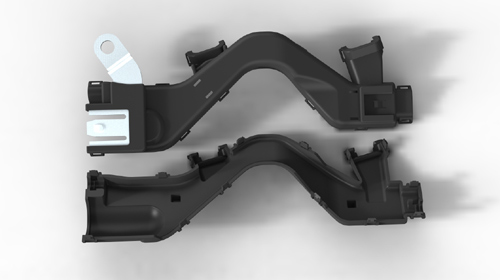If you are dealing with a prototype injection molding project, you have to determine a strategy to create the best prototype before it goes to production. You need to establish a plan that follows a course of action that can fit your budget and your schedule. After you are done with all this prep work, you have to consider the design variables that inevitably come along and create time constraints and increases costs.
One of the first considerations to be had during the prototype phase for a project focused on high volume production is that both concepts and design features should be reflected in the production mold down to perfection. That way, we can make sure that the prototype is appropriately used. This will help validate the design work and clear the air about any misconceptions regarding performance. If you are dealing with a low volume project, you can always use manual hand loads could to lower upfront costs and decrease lead time.

prototype injection molding parts, *picture from fit-production.de
Ultimately production volume will be meaningless if we don’t address some factors that need consideration before the prototype injection molding development. Some of the most critical include tolerances, complexity, structural integrity, and all the knowledge that can be collected to support design intent as well as end-use applications. The following is a list with some of the most common design variables that have to be considered to save both time and money.
· Side Actions at Design Phase
Conceptual design is the first phase of any manufacturing project. It’s the moment to determine a lot of traits of the product such as geometry, shape and finished look. Unfortunately, there is no way to know if mold will need side action until it is tested. This variable can significantly affect the timing and cost of a project. It brings complex issues within the mold, and it takes a lot of time, skill, and technical know-how to make it work properly. The best case scenario is always to design a functional prototype that allows as many tests as possible, and even then issues might come up in this regard if the mold it’s not done properly. This is why it’s so important to work with an engineering team in the early phases of development.
· Round Corners
The best way to avoid sharp corners during a prototype design process is by using a radius to distribute the stress of the piece and to streamline the flow of the molten plastic. When the injection molding process takes place, the hot plastic will turn and place itself on a corner of the mold. By rounding up corners, we can ease the flow of plastic. By contrast, we can see how sharp inside corners will bring molded-in stress. This variable happens a lot during the cooling process, especially when the top portion of the part shrinks and the plastic pulls against the corners. Again, a proper engineering team can identify these areas to improve the design and make it stronger, dimensionally stable, and resistant to post-mold warpage.
· Complex Design
This is an old and tired thread to pull, but it needs to be reminded every time. The complexity of the design of parts plays a massive role in the time and cost it takes to produce it. If a part or a product has too many variables to be addressed, you need someone to provide as much insight as possible on the prototype to make sure that nothing of importance gets taken away. There is also the option to break an intricate design in two pieces that can be assembled into a final product. Time will improve a lot with a simplified build, and the management of data will also translate to practical information that can be handled easily. You will need someone in your team with experience in prototyping and production to weigh these decisions and offer a rounded up scope.
· Handling Wiping Shut Offs
A wiping shut off is something that is needed when the geometry of a part forces you to seclude the parts of a mold against each other to prevent molten material from passing through. As you can probably imagine this is not a desirable situation at all and it can be avoided with some guidance from an engineering team, however, this feature is essential to gall apart. Galling requires wiping shutoff of three to five degrees of the draft to avoid grinding steel of the mold against each other.
· Insufficient Draft
We have to make sure to allocate enough draft to make it easier to remove a part from a mold and to minimize tool wear. Draft also makes it easier to maintain parting lines and secure quality and tool functionality. Draft takes the experience of a seasoned technician to be appropriately handled since they are most likely to understand the parts where is needed the most as well as the material that can handle the procedure better without constraints.
